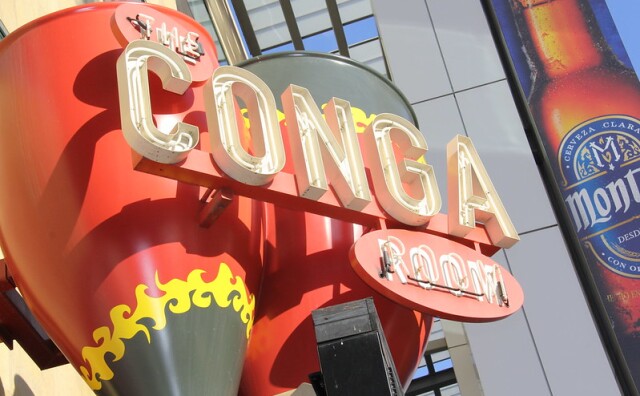LA's Wormhole To The Heavens Is High In The Angeles Forest -- And Open To The Public

For road bicyclists like me, reaching the summit of Mt. Wilson is a leg-breaking test of climbing endurance -- the ride to the top is about 25 miles and 6,000 feet up from my home.
Once there, my only thought is filling up on water and heading downhill (which is a lot more fun). But now, there's a good reason for all of us to stay a while, regardless of how we choose to get up there.

The mountain's observatory complex, officially known as the Mount Wilson Observatory, recently opened the doors to its 100-inch telescope to the public for stargazing.
This summer on the summit there's also an ongoing concert series, science lectures and astronomical events -- with some programs tied to the 50th anniversary of the Apollo 11 mission to the moon. And you can even get a bite to eat at the appropriately named Cosmic Cafe.
It's all part of an initiative by the Mount Wilson Institute, the non-profit that runs the observatory, to bring visitors into the historic compound and meet some of its astrophysicists. The complex, which sprawls over several acres, includes a museum and several telescopes, a few of which are still in use to study the heavens.
The grounds, museum, and the 100-inch telescope viewing gallery are now open every day of the year from 10:00 a.m. to 5:00 p.m., except for weather. Gates open earlier -- at 8:30 a.m. -- on weekends.
The tours, concerts and astronomy talks come as funding for space exploration (and research from the tallest solar telescope atop Mt. Wilson) has been slashed. The observatory receives no regular government support, continuing operations only through donors and telescope tours (some guided small group visits cost $150 for up to 10 people).
Put simply, by opening the observatory to the public for stargazing, the hope is that we don't forget our place in the cosmos.
Here are some summer highlights for your consideration:
- July 13 -- There's a talk about lunar caves and a public viewing through the massive 100-inch Hooker Telescope (the inches describe the size of its mirror).
- July 19 -- There's a musical program in the dome called "Of Sound Before the Stars," whose sounds are derived from the universe's own acoustic waves and "the star-forming sounds of the primordial Universe."
- August 4 -- The Lyris Quartet will twice perform Schubert's String Quintet in C major.
WHAT GOES ON UP THERE
As you tour the campus and see photographs of Albert Einstein, Stephen Hawking and Edwin Hubble on the Mt. Wilson grounds, it does feel as if you're walking in the footsteps of geniuses.

Scattered across the summit between the oaks and the pines is a substantial amount of history, dating back to the early 20th century.
The first installed telescope was imagined by and built in 1908 under the guidance of George Ellery Hale, with the larger 100-inch telescope following nine years later. The Mt. Wilson Observatory was central to critical discoveries about the heavens, including measuring the size of the Milky Way Galaxy and the fact that our universe is expanding.
The mountain's solar astronomer, Steve Padilla, has been peering through the lens of Mt. Wilson's 150-foot tall solar tower -- located a few hundred yards from the Cosmic Cafe -- to plot sunspots pretty much every day for more than four decades. He's still on the job even though funding for his work was cut off years ago.
As you plan your visit, keep in mind that even if you don't end up looking through a telescope, the views of Southern California from the edges of the summit are without equal.
Basically, go for the views, stay for the impossible detail of the moon's surface. Looking through the biggest telescope, you can study an area on the moon about the size of Los Angeles County.
And if you really want to do it right, ride your bike to get there.
-- NORMAL --
-- NORMAL --
-
Samy Kamienowicz, the man who founded the retail camera stores and became a fixture for the city's creative community, has died. Los Angeles pays tribute.
-
The music will live on through the nonprofit Conga Kids.
-
Known for its elaborate light displays, this year, the neighborhood is expecting a bigger crowd tied to the release of “Candy Cane Lane” on Amazon Prime Video.
-
Dancers at Star Garden demanded better working conditions — including protection from aggressive guests. Up next: An actual contract.
-
The Alliance of Motion Picture and Television Producers rejected the SAG-AFTRA union's request for a separate type of residual payment that actors would get once their programs hit streaming services.
-
Sarah Ramos says she actually likes self-taped auditions, but without regulations: “This is a strain on our resources, a strain on our community and it's untenable.”






